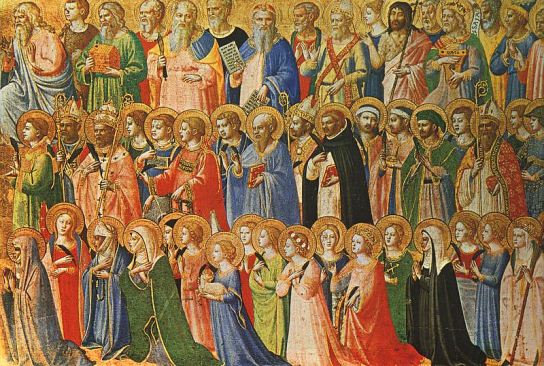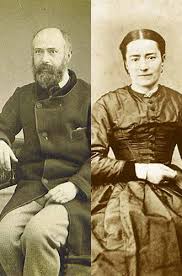You are about to enter a union which is most sacred and serious, an image of Christ and the Church.” Generations of couples heard those words of the Exhortation Before Marriage found in the ritual for the Sacrament of Marriage as celebrated before the Second Vatican Council. Indeed, from the very beginning, Almighty God endowed the union between man and woman with a mission and blessed their commitment to each other. The Lord Jesus Christ raised that union to a sacrament and entrusted to Christian married couples the duty to mirror the love of Christ for his Church.
The calling to the Sacrament of Matrimony is so noble, yet it is currently challenged on many fronts, especially for military families in this time of war, deployment, and suffering. The active-duty chaplains who serve our men and women in uniform and those who minister in the hospitals of the Veterans Health Administration will confirm that one of the most serious by-products of the wars in the Middle East are the burdens placed on families. These burdens are a price that we will pay for generations to come. The weakening of matrimony and family life that results ultimately weakens our society and jeopardizes our future.
Post-Traumatic Stress
Certainly, a significant factor causing the pain that a marriage experiences after deployment is post-traumatic stress. Many of those who have served in the war zone suffer from this stress, which is related to traumatic experiences. However, some have speculated that almost everyone who has served in a war zone has suffered or suffers from some degree of post-traumatic stress.
Post-traumatic stress is not a new problem. Since the Civil War, various expressions have been used to describe the changes that affect a member of the military who has seen combat. “Shell-shocked” was the expression used after World War I, and “battle fatigue” was used after World War II.
What are the symptoms? Sufferers might have distressing recollections, nightmares, and flashbacks to events in the war zone. They may have seen comrades violently killed. They may have experienced an explosion at close quarters. They try to keep the event from their minds and at the same time avoid activities that used to bring them pleasure. They can feel detached and unable to love anyone. Sleep may become a challenge, which results in increased irritability, outbursts of anger, and an exaggerated concept of how much vigilance is necessary. It all stems from a lack of trust, because trust has been betrayed. If one or more of these symptoms persist longer than a month or two, then the person is clearly suffering from post-traumatic stress disorder.
It is not hard to imagine the effects on the sufferer’s family. After having experienced the hardship of separation, they find themselves reunited with a spouse who seems like a stranger to them. Tension can result from the simplest situations of everyday life. Misunderstandings are common. The communion of life, which describes marriage, suffers considerably.
For a variety of reasons, many of those who are afflicted do not seek help. Many might still be on active duty and are therefore reluctant to admit their need. They may fear discharge, which in the current economic situation could easily mean unemployment. Others, no longer on active duty, may worry about possible harm to their post-service career. Many, too, do not realize that they have been changed. They are unaware that something has happened. As is so easily the case, they blame the tension in their marriage on their partner.
Tours of duty in the war zone vary according to service and responsibilities, but no tour is easy for anyone. During my visit to Iraq during Holy Week, I was overwhelmed by the appreciation of those deployed there. I met the men and women who patrol hostile areas, those who care for the wounded, and those who are in positions of command. Their patriotism is obvious, but the weight of the separation from loved ones and the uncertainty of the future cannot fail to increase their burden.
By all accounts the situation in Afghanistan is worse. There, the men and women in uniform are being killed on routine journeys, victims of roadside bombs planted by an invisible enemy. Hundreds of injuries send the combatants home and affect families for the rest of their lives.
Yet back home, life must go on. The children must be educated, the family must be cared for, and decisions must be made. It is true that electronic communication is much better than ever before. The Internet allows frequent contacts. Many military installations have systems in place that allow parents to read to their children on a DVD that is then transmitted home, and other wonders of modern communication function well. Yet that is never the same as being there. Twenty-nine years of living far from loved ones made that lesson very clear to me.
The Economy and Other Tensions
It is true that the present economic situation does not have a direct effect on the military, in the sense that military personnel are not being let go. They experience no problems with unemployment themselves. However, they do experience all the other effects of an economic downturn. Spouses who work in the private sector may well have lost jobs. Frequent moves make spouses’ employment opportunities more precarious. Many enlisted personnel come from more challenged economic situations. They may be supporting many others, including extended family. That responsibility makes their limited incomes a greater hardship when the demands increase.
Deployment also means that a spouse becomes a single parent with all of the challenges that situation entails. The possibility that the condition may become permanent in the case of death in the line of duty also adds to the tension already present in the individual in the military, his or her spouse, and the family.
These tensions cannot fail to have their effect on the military family. Despite all of the military’s efforts to support family life, to give couples and families time together after deployments, and to recognize the strain provoked by the war, the incidence of divorce in military families is on the rise. Some extreme situations have involved homicide and suicide. In the face of separations and the pain of post-traumatic stress disorder, it is challenging to live the communion of life and love intended and blessed by Almighty God.
Reentry into Society
Certainly all of us, military and civilian, can help by our prayers and by our eagerness to welcome home the military personnel who return home to our cities and neighborhoods. We can also perceive their needs and try to offer some assistance in that complex process of reintegration into the family and society. We all contribute to making favorable the conditions that support matrimony as the sacrament of enduring love.
Could that not also mean “turning down the volume” in our society? One of the most striking changes that I have noticed in returning to the United States after years of residence abroad is the abrasiveness of our discourse. People from all sides of the political spectrum write and speak without any attempt at civility, courtesy, or those virtues that once defined a lady or a gentleman. Being convinced that my belief is correct is not an excuse to shout at my neighbor, call him names, or question his sincerity. If we, as Catholics, can remember to treat everyone with kindness and strive to keep uppermost in our minds the fact that every person is created in the image and likeness of God, we can render the Gospel more accessible to our world.
I am not certain if the violence and the abrasiveness so often seen on the television or heard on the radio reflect the condition of our society or if they are partial sources of it, but it is clear that each one of us can make a difference. Inaction is not a worthy response. A more serene society would also contribute to the returning veteran’s tranquility and ease.
Medical care and rehabilitation are indeed responsibilities of the Armed Forces and the federal government. However, I submit that we, as Catholics, have a duty to make our contribution to the psychological and spiritual rehabilitation of these brave young men and women who have sacrificed so much for their country. It is not even a question of agreeing with or sharing the political views of those who fostered the war. It is simply a question of responding to the moral imperative of the Gospel.
We can make a difference in our parish communities by seeking out returning veterans and trying, as a community, to help them reenter society and the rhythm of life in the United States. They may be strangers to their family. They have lost trust. They have been shaken by the atrocities of war. They need time to refamiliarize themselves with those dearest to them.
Marriage is indeed a union most sacred and serious. It is a wonderful gift to the Church and to society. Like all precious gifts it must be cared for, supported, and sustained.
This material was originally developed as a resource for Catechetical Sunday 2010.
About the document
The document Married Couples and the Challenge of Military Service was developed as a resource by the Committee on Evangelization and Catechesis of the United States Conference of Catholic Bishops (USCCB). It was reviewed by the committee chairman, Bishop Richard J. Malone, and has been authorized for publication by the undersigned.
Msgr. David J. Malloy, STD
General Secretary, USCCB
For more support for military marriages, please visit For Your Military Marriage.

 Born: 1207
Born: 1207

 St. Louis: August 22, 1823 – July 29, 1894
St. Louis: August 22, 1823 – July 29, 1894
 Born: January 28, 1572
Born: January 28, 1572


